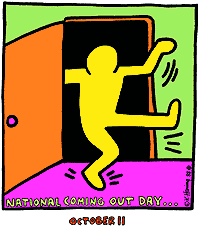Who did you picture? Perhaps a White, physically capable, probably straight, man? If you did, it’s not totally your fault. In part because there’s an image of one to the right.
As consumers of media, we’re regularly fed subtle and powerful messages of what executive leadership looks like. Bill Keller (right), former executive editor of the New York Times, was recently referenced in the New Yorker as follows:
With his square jaw, neatly parted gray hair, dark suit, and pocket kerchief, Keller on this day could have passed for what his father was, the chairman and C.E.O. of Chevron.
With this physical description, he’s a natural ringer for a chief executive of a global corporation making several billion dollars in annual profits, including last year?
The picture of Keller immediately continues, with a rub:
Yet when he stepped to the microphone his voice quavered, and he occasionally paused to restrain tears.
His bone structure, fine hair, and formal dress could link Keller to the role of multinational chief executive, yet he cried, so no behemoth conglomerate chairmanship for him!
The additional message suggests that powerful executive men don’t express tender emotions.
These ideas reach us in a place under the conscious level, and they sometimes come from an unconscious place in the writer. Is the New Yorker writer Ken Auletta aware of his myopic view of executive leadership?
This description of Keller comprises just a few sentences within a 10,000 word essay, so it’s easy to miss the underlying implications. It’s one of numerous written messages we take in regarding who’s fit for leadership in our society.
We get this message delivered in pictures, too.
One example: Read more







